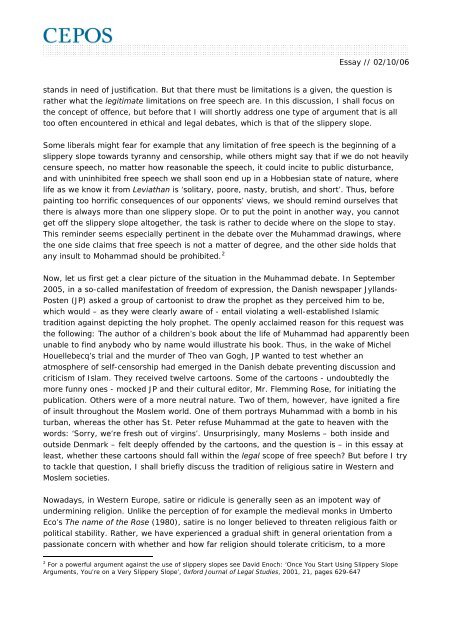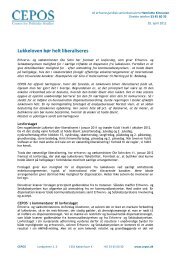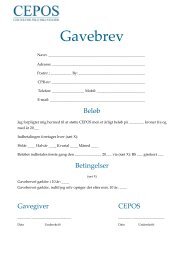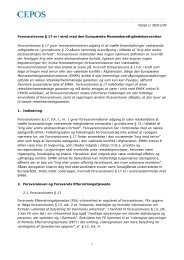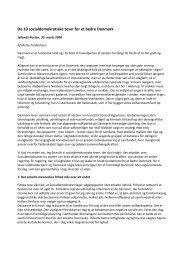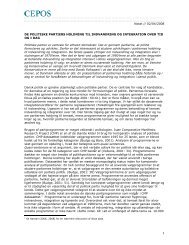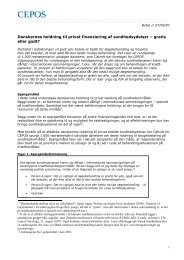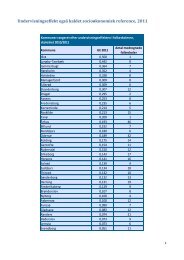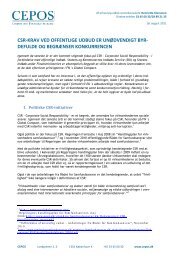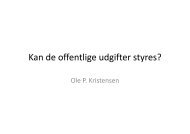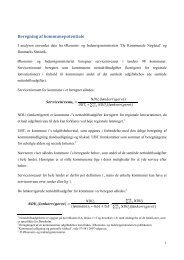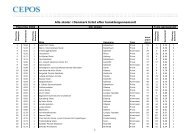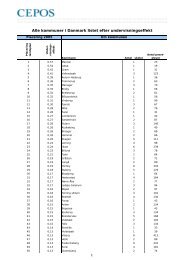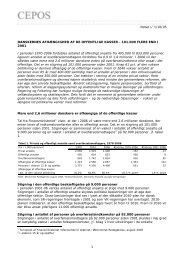FREEDOM OF SPEECH: HALAL OR HARAM - Cepos
FREEDOM OF SPEECH: HALAL OR HARAM - Cepos
FREEDOM OF SPEECH: HALAL OR HARAM - Cepos
Create successful ePaper yourself
Turn your PDF publications into a flip-book with our unique Google optimized e-Paper software.
Essay // 02/10/06stands in need of justification. But that there must be limitations is a given, the question israther what the legitimate limitations on free speech are. In this discussion, I shall focus onthe concept of offence, but before that I will shortly address one type of argument that is alltoo often encountered in ethical and legal debates, which is that of the slippery slope.Some liberals might fear for example that any limitation of free speech is the beginning of aslippery slope towards tyranny and censorship, while others might say that if we do not heavilycensure speech, no matter how reasonable the speech, it could incite to public disturbance,and with uninhibited free speech we shall soon end up in a Hobbesian state of nature, wherelife as we know it from Leviathan is ‘solitary, poore, nasty, brutish, and short’. Thus, beforepainting too horrific consequences of our opponents’ views, we should remind ourselves thatthere is always more than one slippery slope. Or to put the point in another way, you cannotget off the slippery slope altogether, the task is rather to decide where on the slope to stay.This reminder seems especially pertinent in the debate over the Muhammad drawings, wherethe one side claims that free speech is not a matter of degree, and the other side holds thatany insult to Mohammad should be prohibited. 2Now, let us first get a clear picture of the situation in the Muhammad debate. In September2005, in a so-called manifestation of freedom of expression, the Danish newspaper Jyllands-Posten (JP) asked a group of cartoonist to draw the prophet as they perceived him to be,which would – as they were clearly aware of - entail violating a well-established Islamictradition against depicting the holy prophet. The openly acclaimed reason for this request wasthe following: The author of a children’s book about the life of Muhammad had apparently beenunable to find anybody who by name would illustrate his book. Thus, in the wake of MichelHouellebecq’s trial and the murder of Theo van Gogh, JP wanted to test whether anatmosphere of self-censorship had emerged in the Danish debate preventing discussion andcriticism of Islam. They received twelve cartoons. Some of the cartoons - undoubtedly themore funny ones - mocked JP and their cultural editor, Mr. Flemming Rose, for initiating thepublication. Others were of a more neutral nature. Two of them, however, have ignited a fireof insult throughout the Moslem world. One of them portrays Muhammad with a bomb in histurban, whereas the other has St. Peter refuse Muhammad at the gate to heaven with thewords: ‘Sorry, we’re fresh out of virgins’. Unsurprisingly, many Moslems – both inside andoutside Denmark – felt deeply offended by the cartoons, and the question is – in this essay atleast, whether these cartoons should fall within the legal scope of free speech? But before I tryto tackle that question, I shall briefly discuss the tradition of religious satire in Western andMoslem societies.Nowadays, in Western Europe, satire or ridicule is generally seen as an impotent way ofundermining religion. Unlike the perception of for example the medieval monks in UmbertoEco’s The name of the Rose (1980), satire is no longer believed to threaten religious faith orpolitical stability. Rather, we have experienced a gradual shift in general orientation from apassionate concern with whether and how far religion should tolerate criticism, to a more2 For a powerful argument against the use of slippery slopes see David Enoch: ‘Once You Start Using Slippery SlopeArguments, You’re on a Very Slippery Slope’, 0xford Journal of Legal Studies, 2001, 21, pages 629-6472


